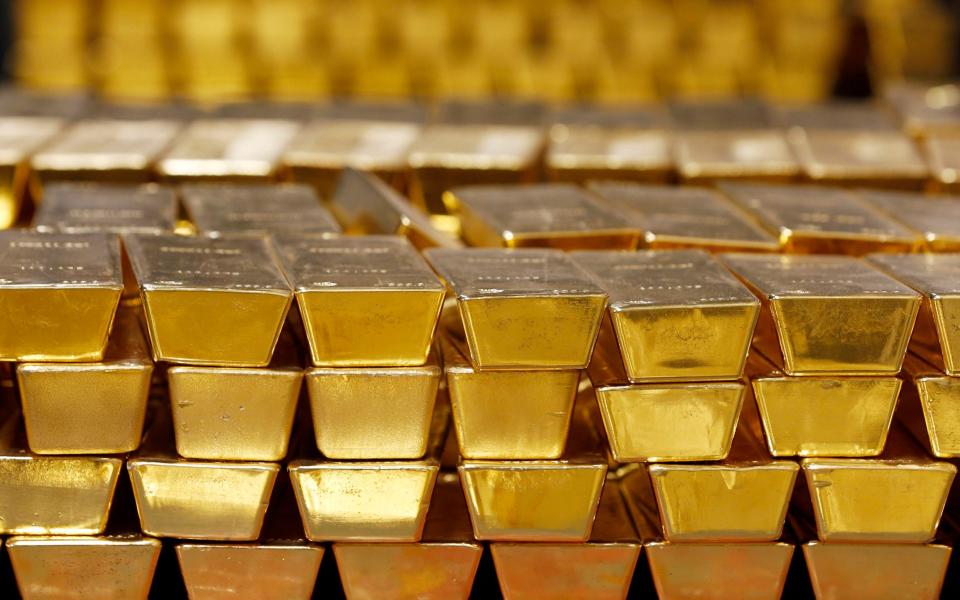The ‘safe haven’ asset that cost investors 30pc of their money

Cautious investors face a £9,000 penalty for choosing supposedly “safe” assets over “risky” stock market funds.
After last week’s news that Britain had slipped into recession in 2023, many investors may be tempted by traditional “safe haven” assets such as gold and government bonds. These typically fare better during market downturns when stocks can run into trouble.
But over the long term there can be a heavy price to pay for erring on the side of caution.
Over the past 10 years all “safe haven” assets apart from cash have at times suffered steeper falls than an investment fund designed to replicate the performance of the global stock market, according to analysis by stockbroker AJ Bell. They have also delivered significantly lower returns overall.
An investor who put £10,000 into a “60/40” portfolio – 60pc shares and 40pc bonds – 10 years ago would have £14,100 today, after inflation, compared with £22,750 for someone who had bought a global stock market fund.
Such portfolios of 60pc shares and 40pc bonds are often recommended to those approaching retirement. The theory is that when one asset falls the other rises, smoothing out returns. But these portfolios failed miserably in 2022 as shares and bonds fell in tandem.
As a result, when we look at performance over complete calendar years, 60/40 investors have suffered more than their “risk-taking” counterparts who held only shares. A 60/40 portfolio fell by 11pc in 2022, compared with 8pc for the fund that tracks global stocks.
Over the past 10 years, investors in “gilts” – bonds issued by the British Government – actually lost money. Once inflation was taken into account, a £10,000 investment would have fallen in value to £8,520. This means gilt investors were only £60 better off than if they had simply kept the money in cash.
Recommended
What are bonds, how do they work and how do you buy them?
Laith Khalaf of AJ Bell said: “It’s been better to be a hare than a tortoise when it comes to investment markets over the past decade. More conservative investors will be used to the idea that they won’t make as much money in bull markets, but perhaps what they may be more disappointed by is that they have had to endure such volatility to achieve such modest returns.”
He said this could in part be attributed to “the huge directional change in monetary policy which routed the bond market in 2022”.
Government bonds are usually among the least volatile assets but in 2022 gilt investors saw their holdings plummet by 23pc as former prime minister Liz Truss’s mini-Budget sent the bond market into crisis.
Of the safe haven assets AJ Bell analysed, gold produced the worst performance within a single calendar year. Gold is renowned for retaining its value during economic downturns, but this does not mean that investors who buy the metal should expect a smooth ride.
While a £10,000 investment in gold 10 years ago would be worth £16,352 today after inflation, for those returns investors would have had to stomach a 30pc fall in 2013.
However, gold’s volatility is not a reason to avoid the asset completely.
“In combination with shares and bonds, gold can fulfil a useful role in a portfolio because it tends to wax and wane at different times to other assets, which can lead to a smoother journey at a portfolio level,” said Mr Khalaf. “But trading gold at a standalone level is a risky game, a bit like Bitcoin without the steroids. Investors should seek to hold a maximum of 5pc to 10pc in gold in a diversified portfolio.”
Although the 60/40 portfolio suffered steep falls in 2022, it has offered some protection against losses. In the first few months of 2020 it lost 15pc while the global stock market fund fell by 20pc as the pandemic took hold.
Despite its poor performance in 2022, it remains a sensible compromise for those nearing retirement, experts say.
Mr Khalaf said: “While there are no guarantees, gilt holders are likely to have a smoother ride now the bond bubble has popped and 60/40 investors can probably expect greater stability from the bond side of their portfolio.
“However, historical performance tells us they are still unlikely to match the long-term returns provided by the stock market.”

 Yahoo Finance
Yahoo Finance 